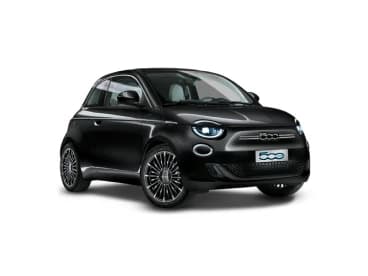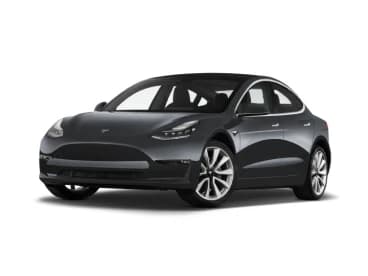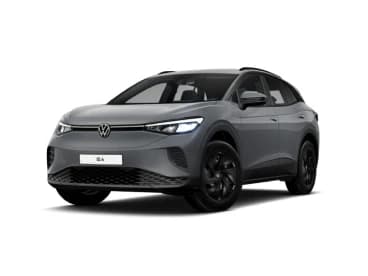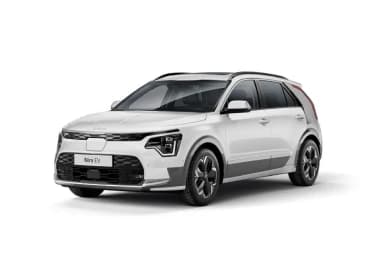Wide selection
70 000 electric vehicles and 120 000 hybrids. The widest selection of verified cars from all over Europe.
Favourable prices
We offer electric cars and hybrids from countries where they are significantly cheaper thanks to subsidies.
Myths and facts
We know the answer to all the questions you have about electric cars and hybrids.
Electric vehicle or hybrid?

Electric vehicle (BEV)
A car powered by one or more electric motors that are supplied with electricity stored in a traction battery. The abbreviations EV (Electric Vehicle) or BEV (Battery Electric Vehicle) are used for these vehicles.
It's a great choice if:
You mostly drive short distances around the city
You can charge at home or at work
You use main roads to travel longer distances
You don't tow heavy trailers (horses, boats, motorcycles)
You want low operating costs and emissions
Popular electric cars
Comparison of different types of engines
BEV
Electric vehicle
PHEV
Plug-in hybrid
HEV
Full hybrid
MHEV
Mild hybrid
ICE
ICE (Petrol/Diesel)
Advantages
Instant acceleration
No noise and vibrations
Spaciousness thanks to the battery's placement in the floor
Zero exhaust emissions
Lower service costs than for internal combustion vehicles
Advanced online features
Possibility of emission-free and cheap daily operation (with overnight charging at home)
Great dynamics in hybrid mode with a charged battery
Same range as an internal combustion car
Very low fuel consumption, especially in the city
Low content of harmful substances in exhaust gases thanks to a specific combustion process
Slightly lower fuel consumption and CO2 emissions than internal combustion engines
No need to worry about charging, fast refueling
Much wider selection of used cars
Availability of service at independent car repair shops
Disadvantages
Lengthy charging
Limited range, with a few exceptions
Uneven charging infrastructure
High weight
Technically complex ('two cars in one')
Expensive
Limited dynamics
The advantage of lower fuel consumption does not apply at motorway speeds
Does not allow electric drive
Minimal cost savings
Mechanically complex
Noise and vibration in common models
Expensive operation
Air pollutants
Cost per 1 km

Important parameters when choosing a vehicle
With electrified vehicles, in addition to the usual criteria, such as space for passengers and luggage, design and equipment, there are also other important parameters that should be looked at. So what should you keep in mind when looking for the electric car of your dreams?
Battery warranty
In response to drivers' concerns about failure of the traction battery, which is the most expensive part in an electric car, manufacturers provide very long warranties. The standard warranty is 8 years or 100,000 km driven, sometimes more. Complaints are usually accepted when the SoH (State of Health or current state) drops below 70%.
Charging speed
The charging speed depends on the power output of the charging station. For example, IONITY chargers can charge with input power of up to 350 kW. High charging power requires a sophisticated cooling system that keeps the battery temperature in the optimal range during charging. Charging power decreases during charging to protect the battery.
Range
The distance a car can travel with a fully charged battery before it needs to be charged again mostly depends on the aerodynamics of the car and the capacity of the traction battery. The range is determined according to a harmonised test procedure (WLTP). The actual range depends on weather conditions (significantly lower in winter), driving speed, the route's profile and battery condition.
Battery capacity
Battery capacity is defined in kilowatt-hours (kW), and sometimes in ampere-hours (Ah). Part of the capacity always remains unused to protect the battery, which is why we distinguish between nominal and usable capacity. The maximum usable capacity of the battery decreases over time due to chemical and thermal stress. Its current state - State of Health (SoH, e.g. 90%) - can usually only be determined by special diagnostics. However, some models of electric cars can also display the SoH directly in the on-board system.

What is the difference between charging electric vehicles and hybrids?
Modern electric cars can usually be charged in two ways: with alternating current and direct current. Plug-in hybrids, on the other hand, generally only support slow AC charging. Full hybrids and mild hybrids are only recharged through recuperation while you drive, they cannot be charged from an external source. That is why they are sometimes called 'self-charging'.
Charging with alternating current - AC
This charging takes several hours. The charging speed depends on whether you are charging the vehicle from a regular socket or a special charger (Wallbox). You should mostly charge with AC, as it is much more battery-friendly. Alternating current is used for charging at home, at work and at some public charging stations, typically in the city. This is usually done using the cable that comes with the car.
TIP!
You can use a mobile application or on-board system to schedule charging in modern electric cars during the cheaper night tariff, or set the time of your morning departure when you need the battery to be charged.
Charging with direct current - DC
Public DC charging stations charge many times faster than home AC chargers. An electric car's battery can be charged from 10% to 80% of maximum capacity in less than 20 minutes. The charging speed slows down significantly as the battery approaches its maximum capacity - this is how manufacturers protect it from damage. Fast charging is much less battery-friendly. You can sometimes pay for charging directly, but chip cards from car companies or energy companies are a more convenient and cost-effective option.
TIP!
You can find the charging infrastructure on our maps, mobile applications and directly in the car's on-board systems - often including additional information such as charging station power output, occupancy and prices. Navigation in electric cars can also take charging into account when planning routes.
Charging guide
How, where and for how much to charge an electric car? Thanks to a relatively rapid increase in the number of new stations being built, charging electric cars is now a widely available service. Individual charging stations differ mainly in terms of their performance, i.e. the time needed to charge your electric car. However, charging options are constantly expanding and you can now conveniently charge your electric car at home, at work, in the shopping centre, etc.
Home
Charging an electric vehicle at home is considered one of the most comfortable, and often the cheapest way to keep an electric vehicle in operation, even if you do not have solar panels and are drawing electricity from the distribution network. If you use your electric vehicle mainly for shorter routes, you can make do with a standard domestic socket (230 V), which is able to just about charge the battery overnight. To allow for faster charging, it is more suitable to use a three-phase socket, or to install a wallbox that offers higher power and smart functions.
On the road
A broad network of public charging stations offers several options for charging: stations marked with AC offer slow charging, while stations marked with DC offer fast charging. The power of fast-charging stations is 50 kW and above, and they are usually equipped with CCS or ChaDeMo connectors. Ultra-fast stations can offer power of more than 100 kW, which you will especially appreciate on longer routes, or when you are in a hurry. Most electric vehicles are equipped with navigation systems with a route planner and charging station search based on your current location, the availability of the station, and the type of connector for your car. The speed of charging, as well as the price, can differ with the given provider and location.
Charging applications
Apart from integrated navigation systems, there are a number of web-based and mobile applications, such as PlugShare, Chargemap, and A Better Route Planner, which offer advanced functions for route planning with regard to the availability of charging stations based on the parameters of your car. Usually, these applications provide up-to-date information including availability, price, payment options, and charging speed.
Payment methods
Payment methods differ depending on the charging station and operator. It is possible to pay through an application, a pre-paid card, a chip, or with a credit/debit card. Alternatively, you can also use special pre-paid cards or chips which enable easy identification and payment at compatible stations. The option of payment with a standard credit/debit card at the charging station is rather an exception at the moment.
Range and Charging of the Electric Vehicle
The range listed by car manufacturers is a homologated value determined via precisely defined laboratory procedures. See how the real range can change based on various factors. Our calculator includes 20 popular electric vehicles, which we have chosen as a faithful representation of today's market.
Car selection
Škoda Enyaq 85x
Range 536 km • Battery 82 kWh
Use
City
Motorway
Combination
Which type of driving is most common for you?
Eco
Normal
Sport
Usual occupancy
1-2
2-3
4+
Battery health
100%
Selection of driving conditions
City
Normal
1 person
100%
Charging
Public DC
28 min
135 kW charging power
Public/Home AC
8 h 15 min
11 kW charging power
Home socket
39 h 30 min
2 kW charging power
Estimated Range
Mild climate
575 km
15 °C
Freeze
426 km
-10 °C
Calculation
Mild climate
575 km
15 °C
Freeze
426 km
-10 °C
Public DC
28 min
135 kW charging power
Public/Home AC
8 h 15 min
11 kW charging power
Home socket
39 h 30 min
2 kW charging power
Latest offers
70,000 electric vehicles online just a few clicks away
New, refurbished and used electric vehicles with a warranty and delivery to your home.

What you ask us the most
Myths and misconceptions about electrified vehicles.
Is an electric car right for me?
I want an electric car, but I can't charge at home. What should I do?
How long does it take to charge an electric car?
How can I find public charging stations?
How long does the battery of an electric car or hybrid last?




